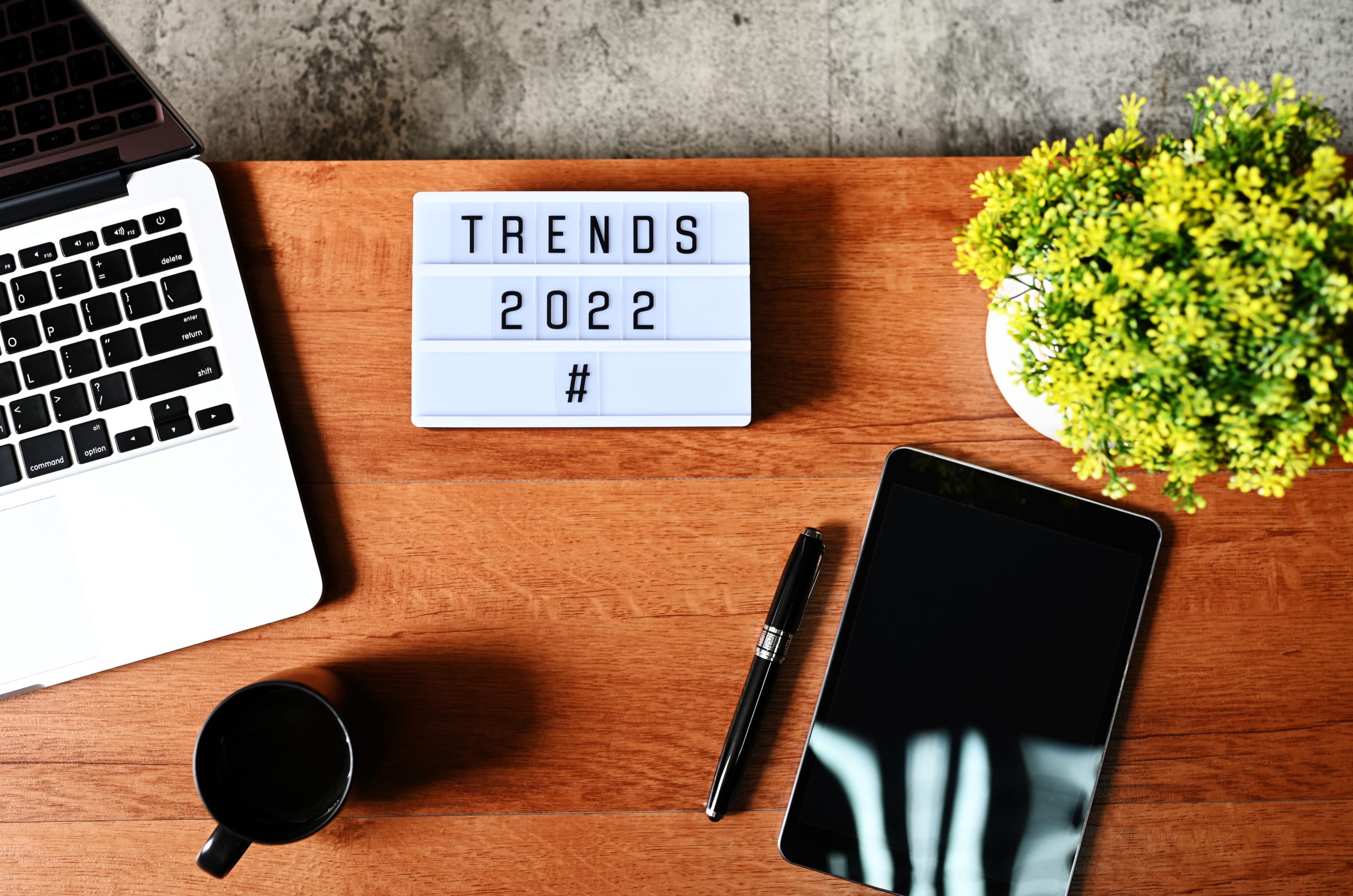Trends in Retail
Every industry is getting transformed by data, with retail amongst the most dramatic and fastest paced. As consumers become increasingly demanding, a seamless experience between the digital and in-store expectations for both customers and employees also evolve.
The retail industry is experiencing a renaissance as customers are hungry to experience the world after two years of lockdowns. However, this sector continues to struggle with tight margins and many players.
Consumer behaviors continue to evolve; the availability of mobile apps, same-day delivery and personalized experiences are table stakes. Consumers are willing to exchange details about themselves and their preferences, but only when they see how it powers a compelling and personalized experience. Across retail we’re seeing growing opportunities to use data to meet customers where they are, when they want with products they find engaging.
Influencer Impact
The impact of social influencers can no longer be ignored as it relates to building interest for new products, new designs, and engaging new buyers. The ability to identify influencers, understand the market segments they speak too and how best to leverage their voice is critical to growing your total number of customers and increasing the total lifetime value for existing ones. All this must be carefully managed across our marketing technology stack to identify influencers, measure their impact, and manage their use as part of a larger marketing strategy.
For retail organizations that regularly launch new designs and products, the need to build early excitement and pre-order momentum is critical to success. The ability to leverage social media data to understand our buyers and the influencers in their segments is impactful. The ability to identify influencers and quickly engage with them for product placement allows a wider audience awareness of new products in a cost effective way for marketing. This placement must be measured through attribution tools. A unified toolkit allows social media and marketing analytics teams to collaborate on how best to leverage marketing budgets, measure their impact, and adjust real time as campaigns show results.
Labor Shortages
Retail organizations continue to struggle with labor shortages caused by high turnover and difficulty recruiting in a strong economy. Stores struggle to maintain extended hours while ensuring customers are engaged quickly when entering the store and have full attention from staff.
Social media provides unique opportunities to address the labor market. To capitalize, your organization must ensure tight integration and process alignment between recruiting, store operations, and marketing communications teams. With strong profiles of potential employees, marketing teams can target specific segments of social media users with job postings, job fairs, and quick posts about the cultural experience of working for your organization.
This engagement must be fast-paced to target candidates when they’re available and bi-directional. Marketing communications and social media teams should engage in real-time conversations with potential employees, answer questions, and share greater information about the organization outside of a traditional interview process.
Interactive Retail
Buyers are looking for richer experiences. Customers demand an omnichannel experience as they move from exploring products online, to arriving at a retail location to experience products personally receiving guidance from the experts on product selection and use. This is shifting how stores think about scheduling visits for customers, how employee scheduling is managed ,and how social media teams engage with digital buyers real time to offer in-store visits to continue online conversations. All of this requires retail organizations to have integrated views of customer history, preferences, and available discounts to influence behavior.
The use of advanced technologies like AR and VR will enable buyers to experience products, see how they look in their own home, or while wearing them. While these are not substitutes for how clothes feel when warn, they enable buyers to shorten their list of items to try on when entering a store. By coupling inventory data, with user personalization and history, customers can virtually experience products, then arrive at a store and have them and a store specialist ready to try them in real life from a short list created virtually.
As the ability to move from the virtual world to the physical store extends to personal relationships, there is immense value in coupling store scheduling with customer visit scheduling to allow buyers to meet with their preferred sales rep, knowing when they’re working.
Stock Evolution
Many retail organizations will fulfill orders from a combination of local stores and warehouse facilities. While this allows for greater inventory to fulfill orders from, it creates additional challenges in stock placement, store layout (to allow for packaging), and returns and inspection processing.
Leverage your data! Ensure that you’re building a strong data platform that includes history of orders, with fine granular details of buyer profiles, location or order, location of delivery, and supply chain history. This allows data science teams to predict not just the demand of new products and designs, but also the supply chain characteristics that could lead to delays.
The need to evaluate both demand side and supply sides ensures companies have early warning to possible supply chain shortages and delays and react by shifting suppliers, placing risk orders, or cutting back on buyer incentives to manage demand over time for specific products.
Same-Day Delivery
The pandemic and the extended use of home delivery has shifted buyer expectations. They demand that any product they purchase offer an opportunity for same day delivery. In nearly every class of retail products–clothes, food, home goods–consumers appreciate the ability to explore reviews, see social media posts, and decide to make a purchase with the intention of experiencing it that day. The idea that you can pick out a new outfit in the morning and have it delivered in the afternoon to wear that evening is compelling to buyers.
The ability to forecast demand, manage fulfillment processes and adequately plan space for packing and preparation are key to ensuring same day commitments can be made to customers and fulfilled. By coupling our stock evolution planning data with details about our store layouts, employee schedules and shipping commitment data from our delivery vendors we can better manage the intersection of stock placement and fulfillment to enable same-day delivery across a wider area and set of products.
The changing retail landscape creates opportunities to for more personalized experiences, stronger engagement with our influencers and buyers in a more connected way and managing our products in a data driven way, influenced and reactive to our buyers changing patterns. To participate in this change, organizations must take several actions as they mature their technology platforms:
- Simplify your Marketing Communications (marcom) Stack. Build your marcom technology stack anchored to the key data your organization owns about products, buyers, locations and history. This anchoring ensures that as marcom tools come and go, the anchoring data is the same, removing dependencies from any specific tool and allowing your organization to purchase best of breed tools for each stage of the marcom journey.
- Don’t Forget Social Media in Architecture. Beginning with your business architecture, through functional architecture and down to technical and data architectures ensure that social media data is referenced and equal to data about consumers, point of sale, locations, inventory and product. Social data provides unique capabilities to identify early trends for reaction in the supply chain and product cycles, as well as rapid signals for marketing to adjust campaign plans.
- One Source of Truth Spanning Digital & Retail. Building the vision of a single omnichannel experience that enables interactive retail possibilities requires the ability to understand each customer at a personal level through all engagements with the brand(s). Building systems and processes around this idea of a single gold record of data for each customer, enriched with data from each unique channel allows for highly specific personalization and engagement.
- Tools for Recruiting are the Same as Customer Ad Targeting. While the objective for social engagement is different between buyers and potential employees, the techniques used to engage & measure are highly similar. The primary difference is the segmentation of who is being targeted and the depth of their social networks. Leverage your social network, your marcom stack and partner with recruiting to build powerful networks of future employees by speaking about your culture, your benefits and brand’s social impact.
- Data Science Techniques for Stock Evolution. Often the most impactful place for a retail organization to apply early data science work is understanding & predicting needs and shortfalls in the supply chain. Often organizations will begin with demand side forecasting to better understand consumer behavior and better match stock buys and placement to drive sales. Ideally, in parallel the organization can explore supply side dynamics to better understand where potential shortfalls can affect delivery for highly integrated and complex supply chains.
- KPIs. The only way to ensure your organization is successful in their application of data and data science is to ensure strong measurement of outcomes to correlate with changes and new capability rollout. Define your KPIs early, publish them wildly and refer to them often when making decisions about investments. The use of KPIs will influence where and how data is consumed and if the outcomes are a net positive.
The relationships between consumers and retail institutions are fundamentally changing. Consumers are looking for more engaging experiences, more seamless movement between digital and brick and mortar experiences, and high levels of personalization in all journey touch points. Data is key to successful engagement with consumers, so the ability to understand their preferences and meet them based on their schedules and provide impact recommendations is key.
Here at Pythian, we’re ready to enable you to be successful in this changing retail landscape. Contact us at info@pythian.com and we’ll help you uncover what you can accomplish with your data.
You May Also Like
These Related Stories

Future-Proofing Retail: How Google Workspace Sets Retailers Up for Success

The Top Ten Data, Cloud, & Analytic Trends CIOs & CTOs Can’t Ignore: Part 1


No Comments Yet
Let us know what you think